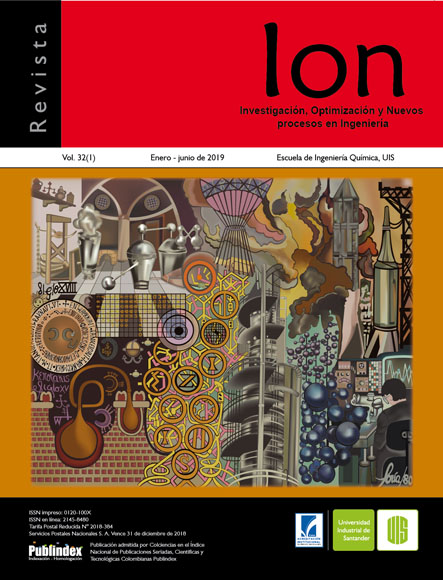Thermochemical Study of Gasoline Additive Production Tert-Amyl-Methyl-Ether (TAME)
Published 2020-05-16
Keywords
- TAME,
- Thermochemical,
- equilibrium,
- simulation,
- additive of petrol.
How to Cite
Abstract
Reactive production and separation processes are widely used in the process industry in general. Specifically, the distillation process requires the equilibrium study of the mixtures are fundamental to the separation process. In the case of Tert-Amyl-Methyl-Ether (TAME) works as an oxygenator additive, improving the mechanical performance of the vehicle. Thus, the study of the thermochemical behavior and phenomena of the different components involved in the TAME production system are calculated for the later understanding of the purification project. Therefore, the objective of the study is to analyze the mixed components using the Aspen Plus V9® process simulator. The UNIFAC thermodynamic model was used to estimate the equilibrium binary parameters of the reagents and reactives calculated with the simulator. The observation of the analyzed aspects presents the presence of azeotrops in different temperature conditions, nine points for different temperatures of binary mixtures were estimated in the thermochemical study.
Downloads
References
[2] Tuchlenski A, Beckmann A, Reusch D, Düssel R, Weidlich U, Janowsky R. Reactive distillation—industrial applications, process design & scale-up. Chem. Eng. Sci. 2001;56:387-94.
[3] Vanaki AS, Eslamloueyan R. Steady-state simulation of a reactive internally heat integrated distillation column (R-HIDiC) for synthesis of tertiary-amyl methyl ether (TAME). Chem. Eng. Process. 2012;52:21–7.
[4] Nakaiwa M, Huang K, Endo A, Ohmori T,Akiya T, Takamatsu T. Internally Heat integrated distillation columns: A review. Chem. Eng. Res. Des. 2003;81:162-77.
[5] León Pulido J, Martinez EL, Bineli ARR; Wolf MR, Filho RM. Heat Transfer Study in a Concentric Stage of an Internally Heat-Integrated Distillation Column (HIDiC) Using CFD Simulation. In: Ao SI, Douglas C, Grundfest WS, Burgstone J, editors. Proceedings of the World Congress on Engineering and Computer Science. 2010 oct 20-22; San Francisco, USA. San Francisco: Newswood Limited; 2010. p. 742-7.
[6] León Pulido J, Wolf MR, Filho RM. Nuevas Perspectivas en Procesos de Separación: Simulación Columna de Destilación con Integración Interna de Calor (CDIIC). rev.ion 2010;23(1):7-12.
[7] Levenspiel O. Unsteady-state heating and cooling of solid objects. In: Engineering flow and Heat Exchanger. Levenspiel O, Editor. USA: Springer; 1993. p. 245-59.
[8] Luyben LW. Comparison of Pressure-Swing and Extractive-Distillation Methods for Methanol-Recovery Systems in the TAME Reactive-Distillation Process. Ind. Eng. Chem. Res. 2005;44(15):5715-25.
[9] Hansen HK, Rasmussen P, Fredenslund A, Schiller M, Gmehling J. Vapor-liquid equilibria by UNIFAC group contribution. 5. Revision and extension. Ind. Eng. Chem. Res. 1991;30(10):2352-5.
[10] Leon Pulido J, Sarmiento MP, Garzon DM, Hernandez MA, Gonzalez AD, Peralta Ruiz YY, Duran M. Energy Study of Reactive-HIDiC Simulation for Ethyl Acetate Synthesis from Acetic Acid. Chem. Eng. Trans. 2017;58:547-52.
[11] León Pulido J. Estudo de um novo conceito de coluna de destilação: coluna de destilação com integração interna de calor (CDIIC) (Dissertação de Mestrado). São Paulo, Brasil: Universidade Estadual de Campinas; 2011.

